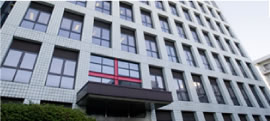
Our laboratory started in 1997, and as a main research topic we have been focusing on modes of viral infection with HIV-1, and SARS-CoV. Now we are underway to develop novel systems that were derived from obtained data and can be applicable to clinical fields.
In addition to these projects, we started in 2007 a new research on endogenous retroelements. During analysis of the mode of severe respiratory deficiency caused by SARS-CoV, we noticed that genetic background of the patients and biological effects of environmental factors are both important for understanding pathological conditions. By the millennium project, numbers of disease-related genetic polymorphisms have been identified, and much information about functional abnormalities of gene products was collected. However, the human genome project taught us that genes, which encode proteins, comprise only 1-2% of total human genome. On the other hand, approximately half of human genome is composed of repetitive sequences, suggesting that information about genetic polymorphisms is too tiny to fully understand the mode of pathogenesis. Additionally, we have no research tool that enables us to catch biological effects of environmental factors. Based on these observations, it was required to establish a novel system, by which we can monitor effects of environmental factors on endogenous retroelements. Currently, we are focusing on long interspersed element-1 (L1), an autonomous endogenous retroelement that can jump within genome by itself in response to environmental factors, and obtained data that L1 activity has positive link with the development of various pathological conditions.
Our tentative goal is to understand how environmental factors modulate the activity of endogenous retroelements and cause pathological conditions. As the final goal, we wish to answer why Homo sapiens, the most advanced species, has to possess functional L1 that can cause various diseases as an endogenous mutagen.

-

National Center for Global Health and Medicine
1-21-1 TOYAMA,SHINAJUKU KU,TOKYO,162-8655
TEL (03)3202-7181
FAX (03)3202-7364










